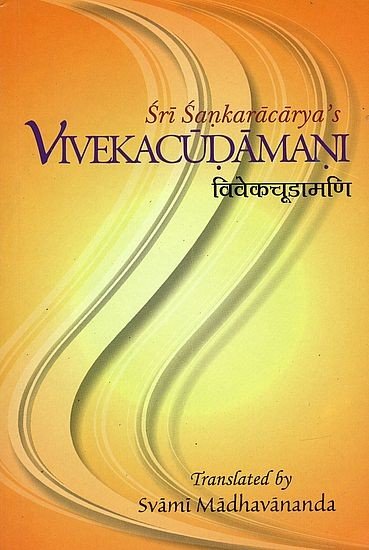Vivekachudamani
by Shankara | 1921 | 49,785 words | ISBN-13: 9788175051065
The Vivekachudamani is a collection of poetical couplets authored by Shankara around the eighth century. The philosophical school this compilation attempts to expose is called ‘Advaita Vedanta’, or non-dualism, one of the classical orthodox philosophies of Hinduism. The book teaches Viveka: discrimination between the real and the unreal. Shankara d...
Verse 445
निदिध्यासनशीलस्य बाह्यप्रत्यय ईक्ष्यते ।
ब्रवीति श्रुतिरेतस्य प्रारब्धं फलदर्शनात् ॥ ४४५ ॥nididhyāsanaśīlasya bāhyapratyaya īkṣyate |
bravīti śrutiretasya prārabdhaṃ phaladarśanāt || 445 ||445. One who is constantly practising meditation is observed to have external perceptions. The Śrutis mention Prārabdha work in the case of such a man, and we can infer this from results actually seen.
Notes:
[External perceptions—such as satisfying the physical needs or teaching enquirers etc.
Srutis &c.—The reference is to Chhandogya. Upanishad VI. xiv. 2, “Thedelay in his (i. e. a Jnanin’s) case is only so long as his body lasts,, after which, he becomes one with Brahmam”
Prarabdha work—is the work done in. past lives which has engendered the present body (referred to in Sloka 451). The other two kinds of work are the ‘Sanchita’ or accumulated (mentioned in Sloka 447) and the ‘Agámi’ or forthcoming (mentioned in Sloka 449).
Results &c.—the continuance of the body after realisation, and its experiences during that period can only be explained by assuming that the Prárabdha continues to work. This is further explained in the next Sloka. ]
